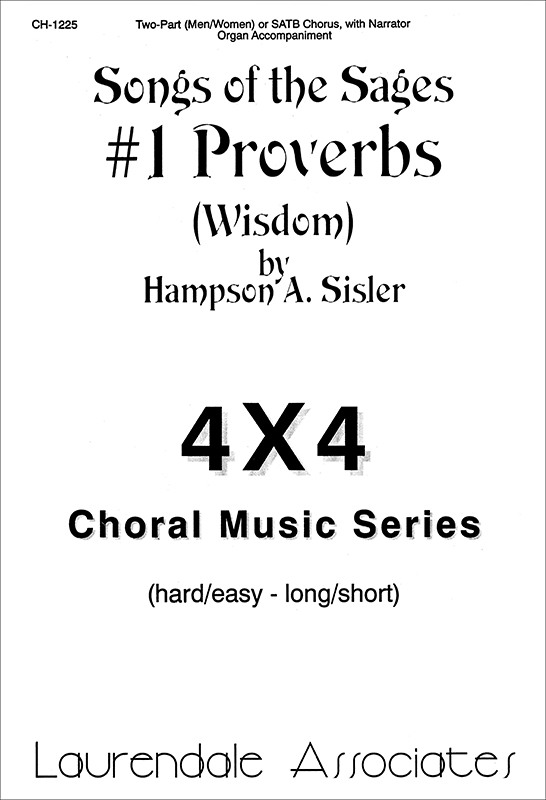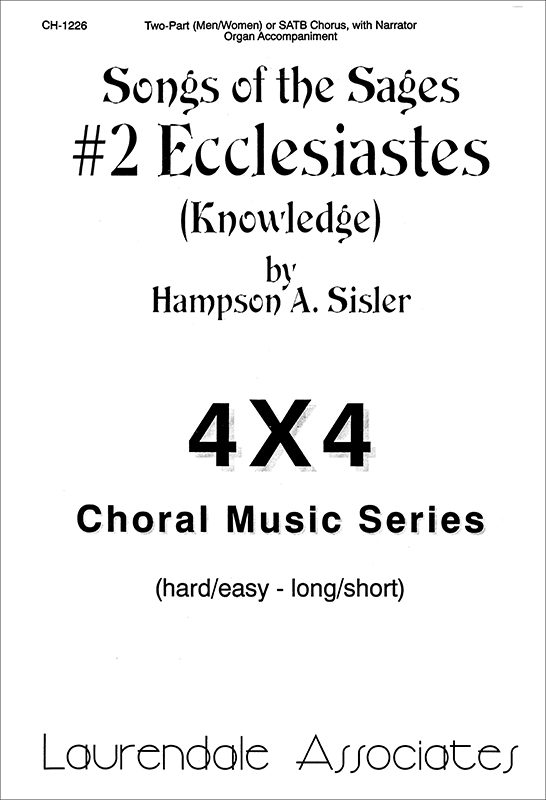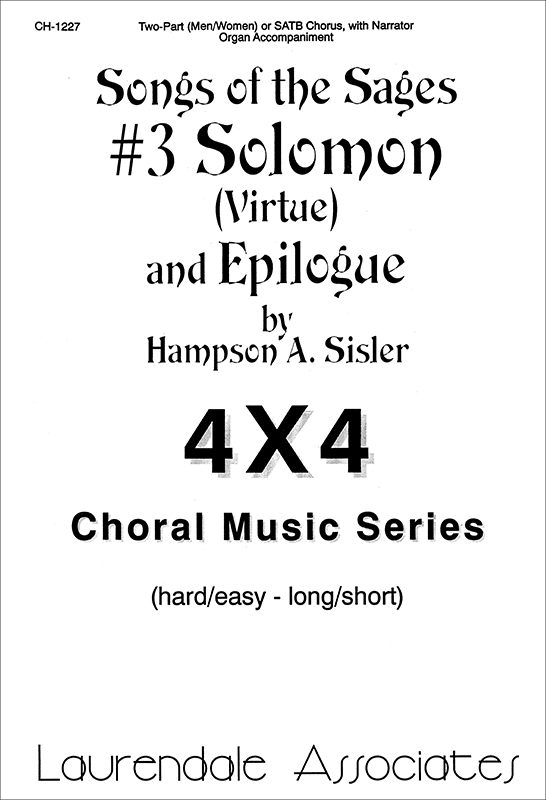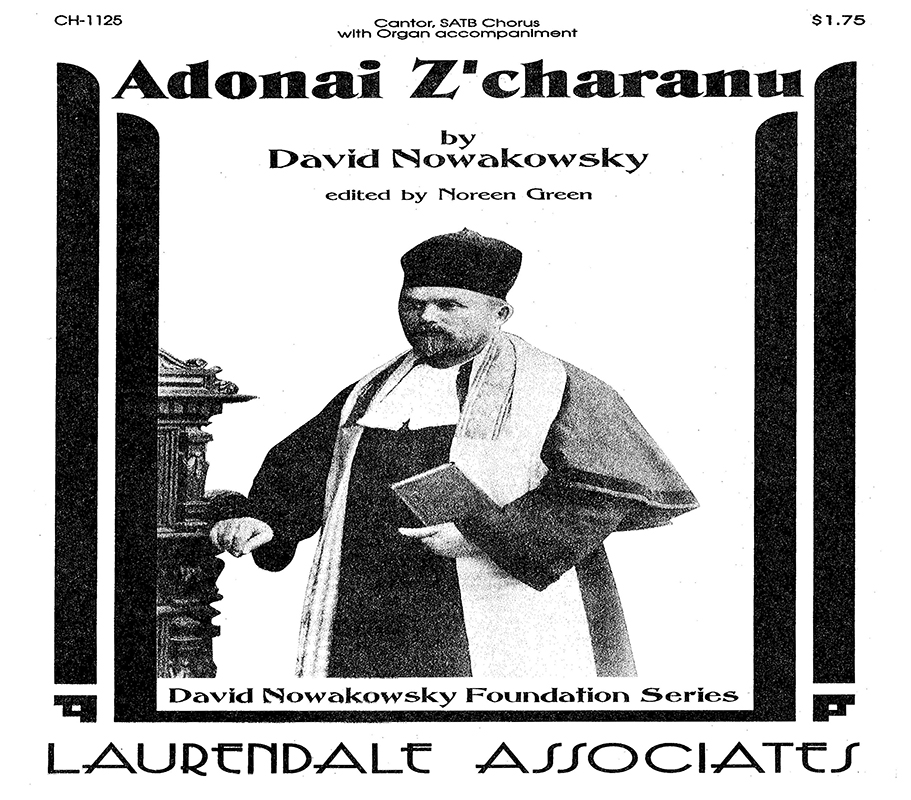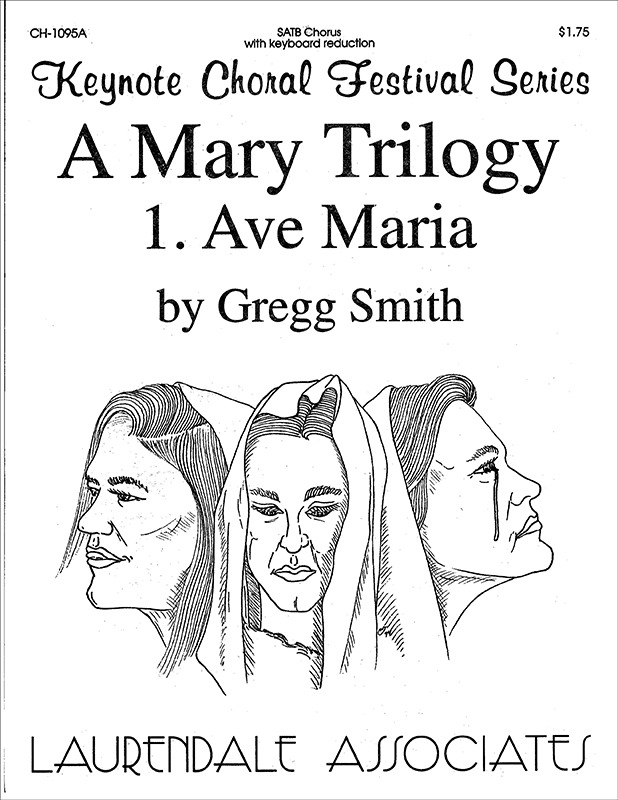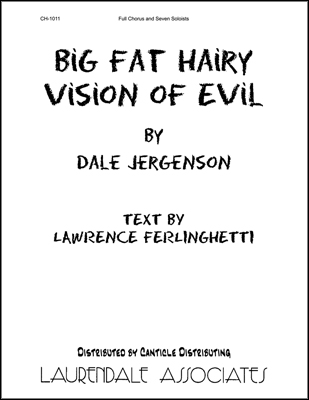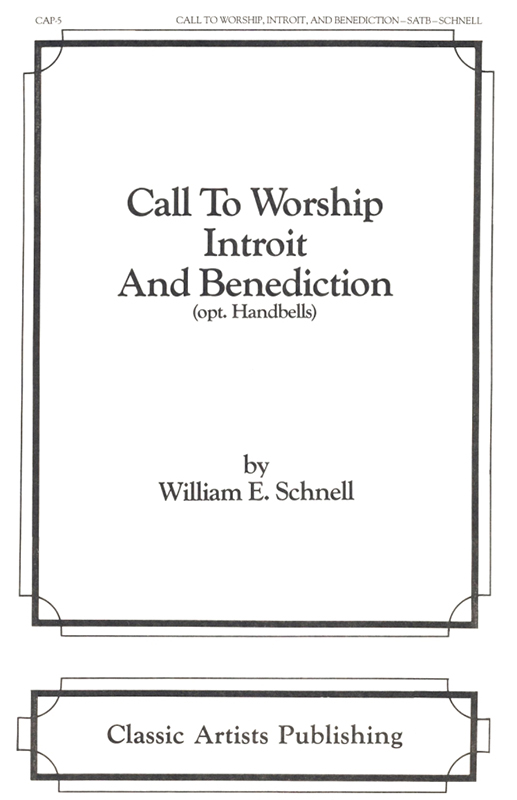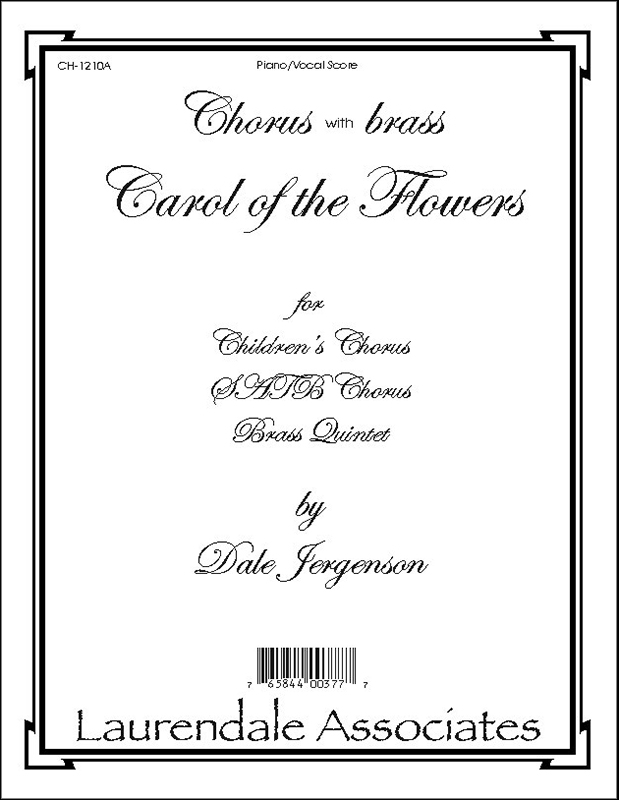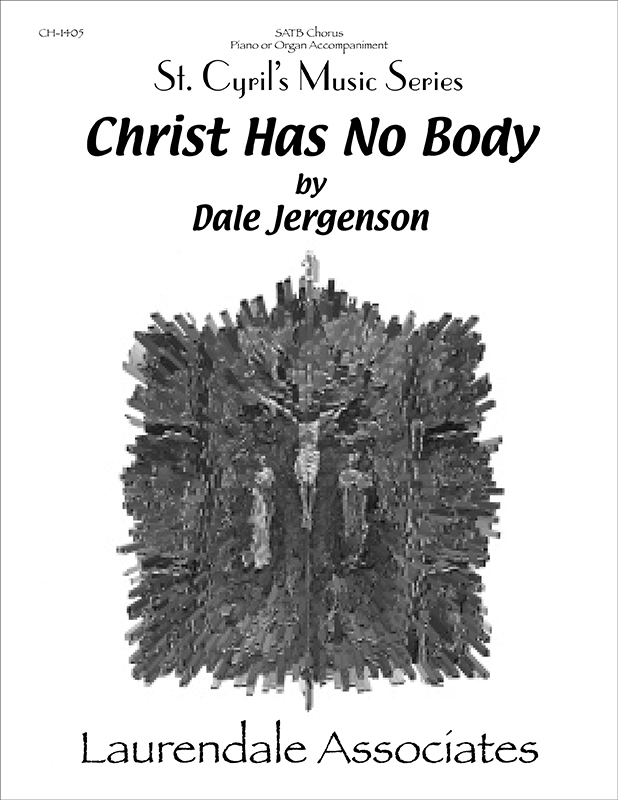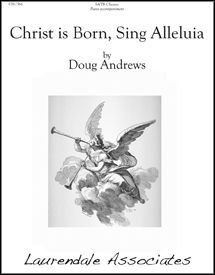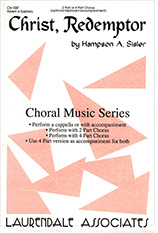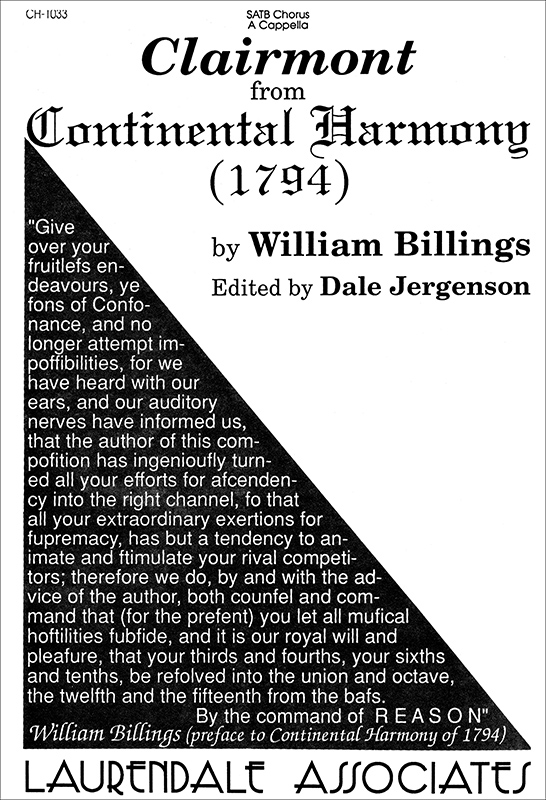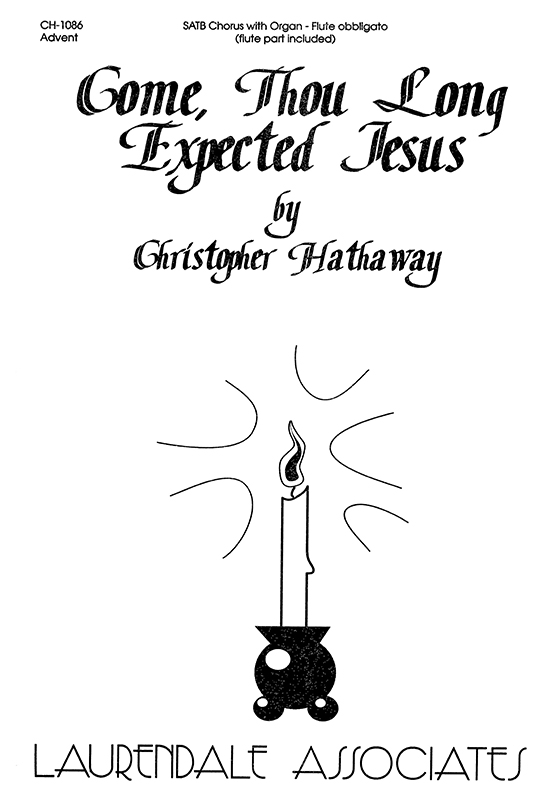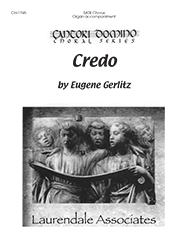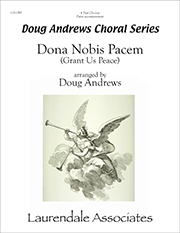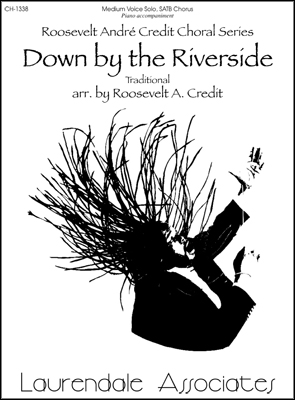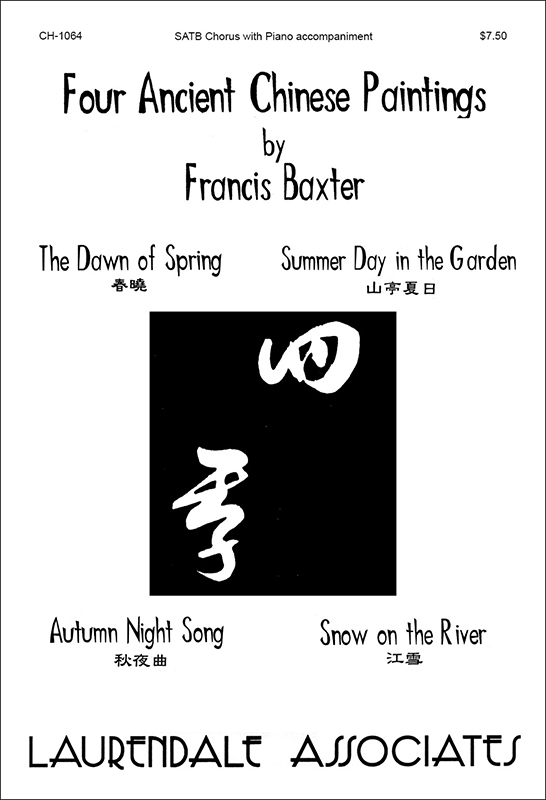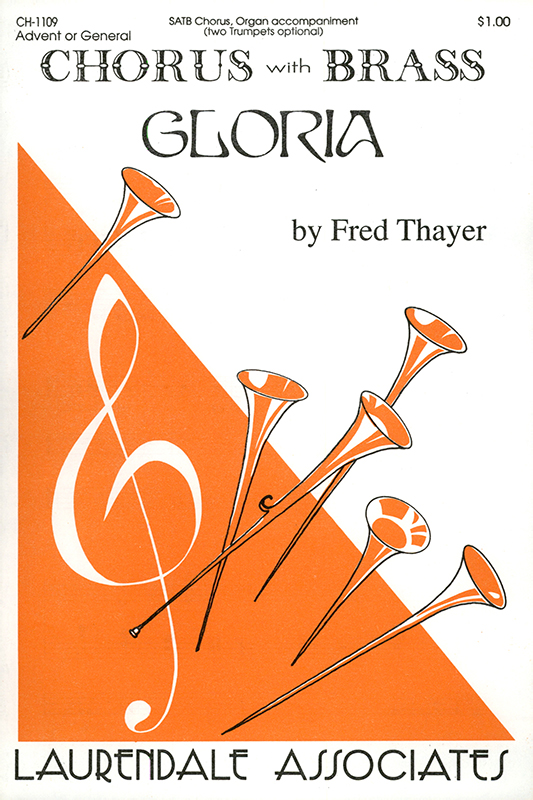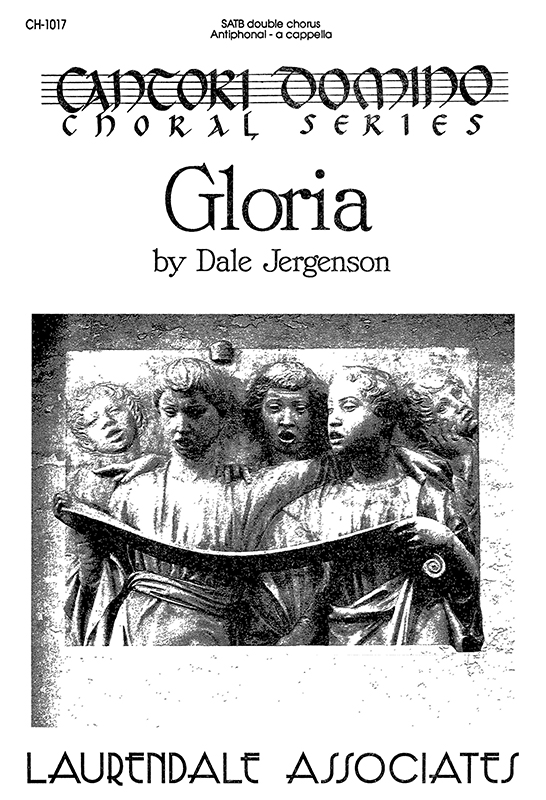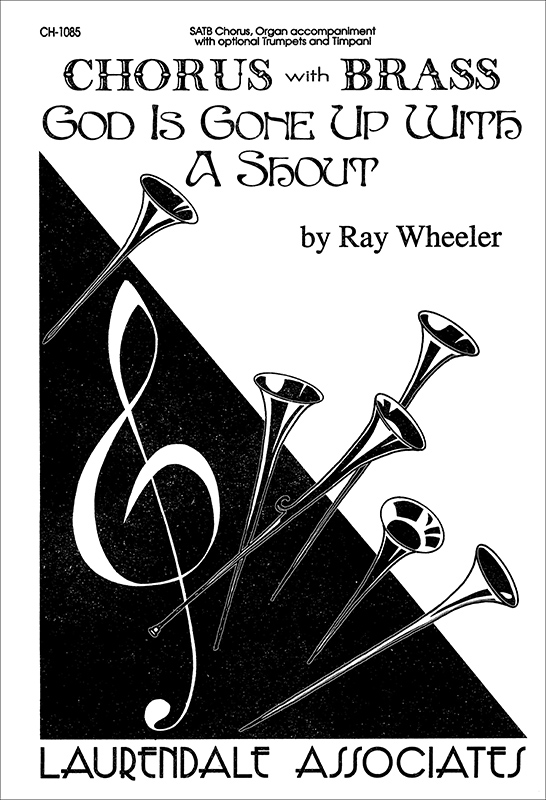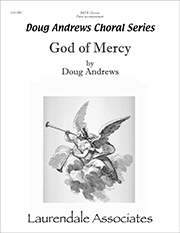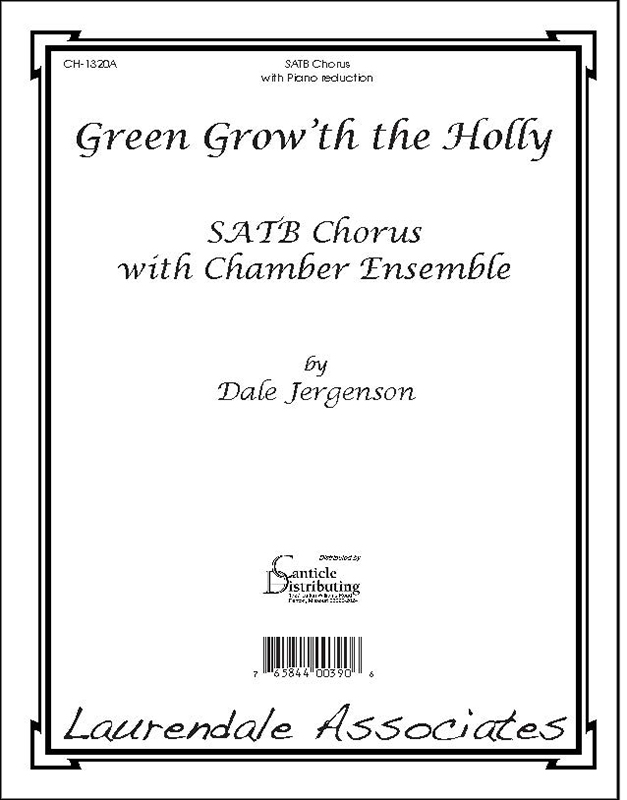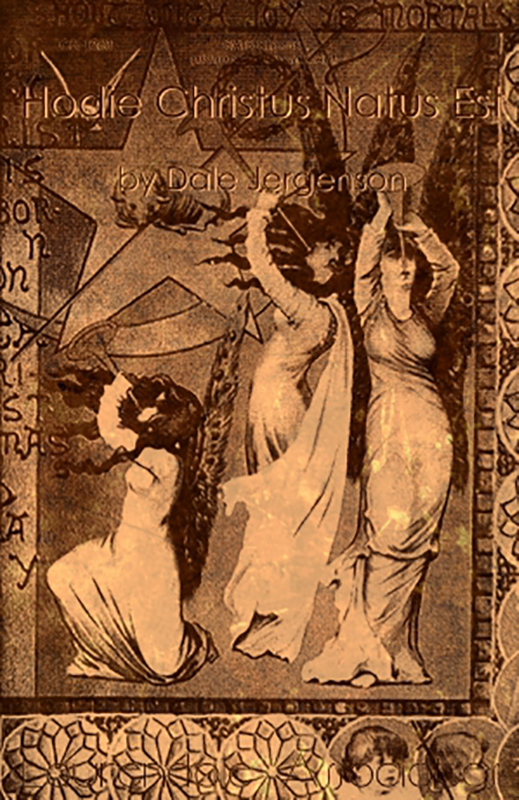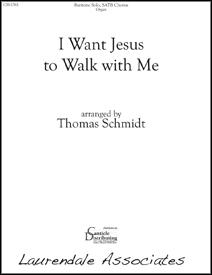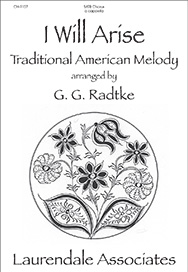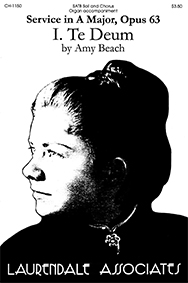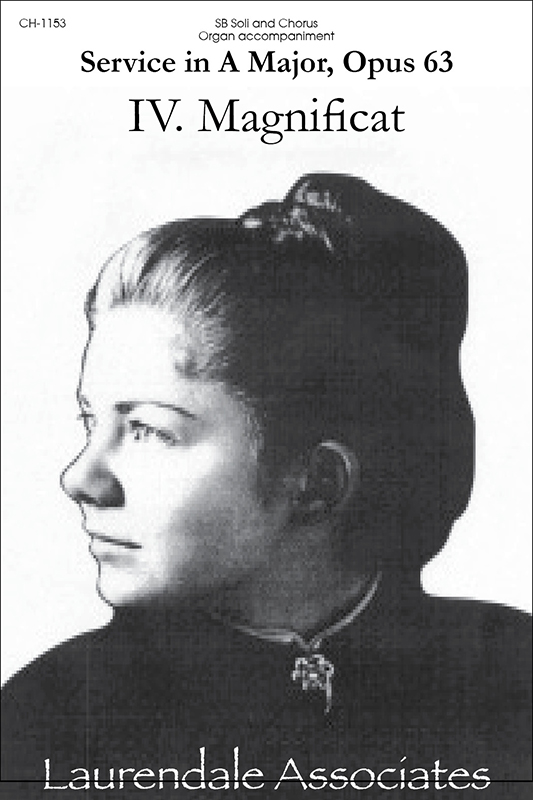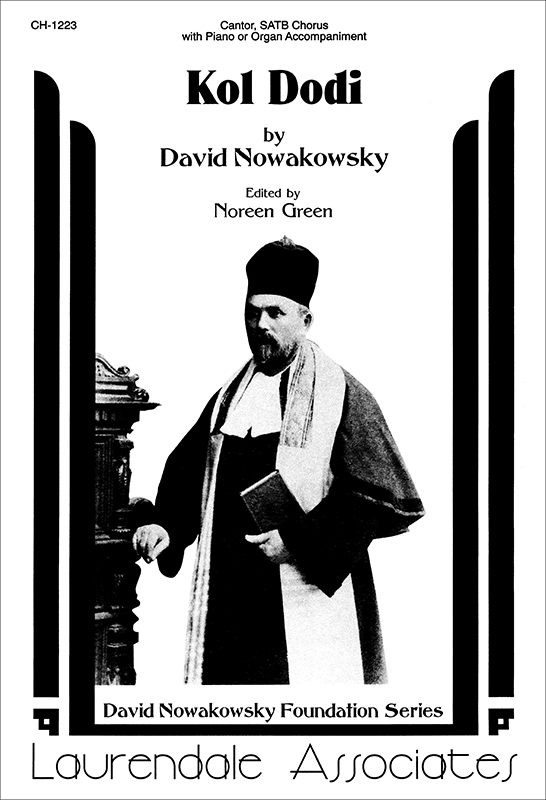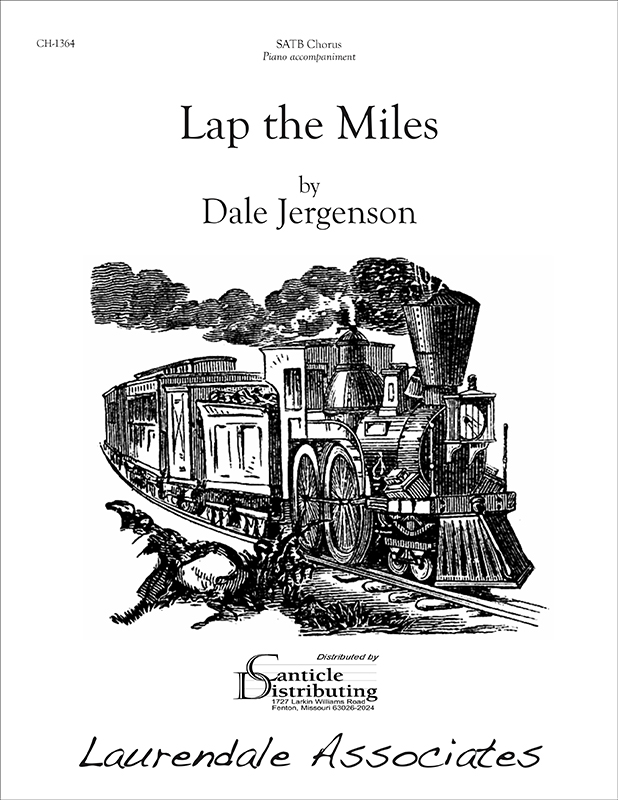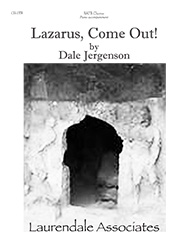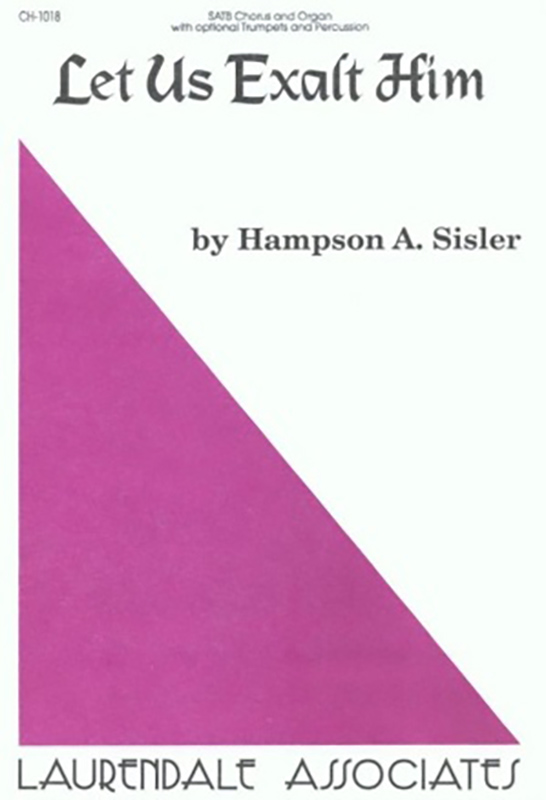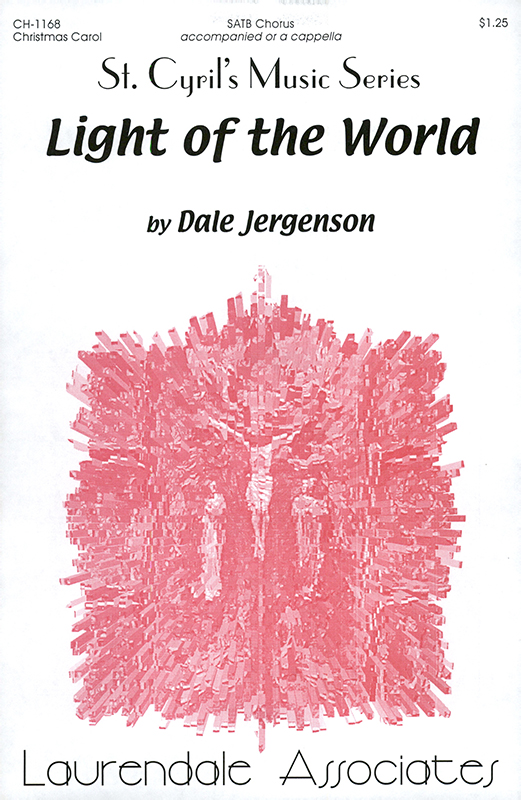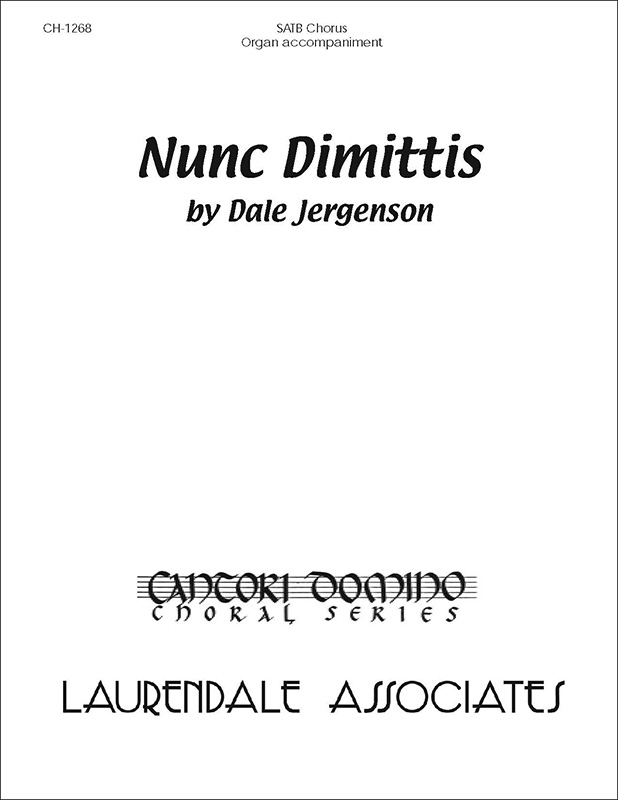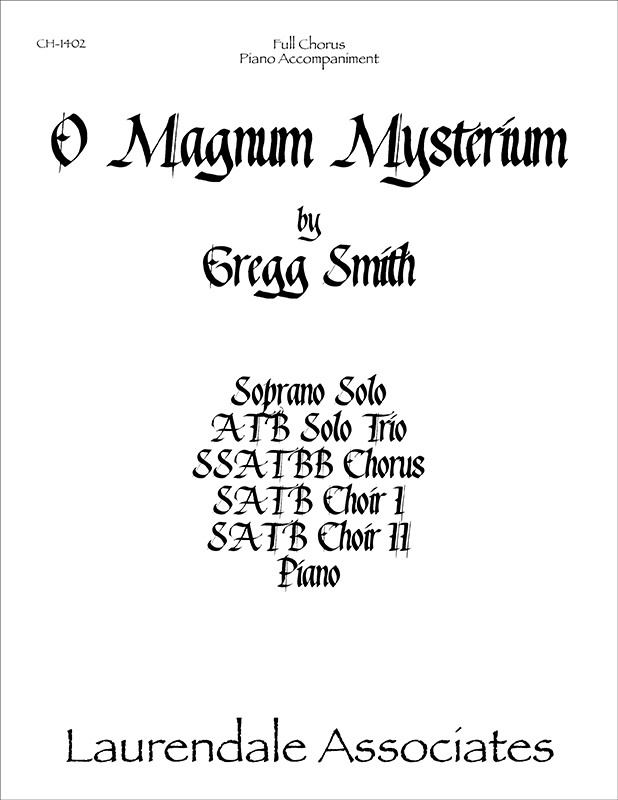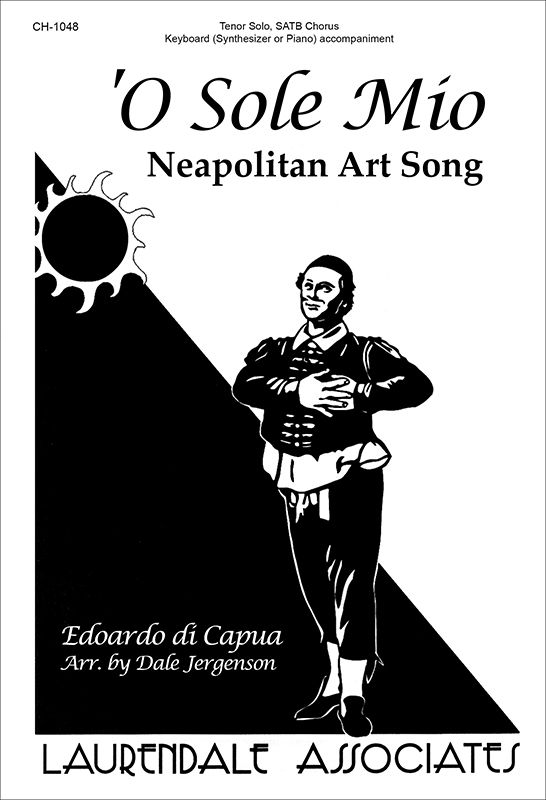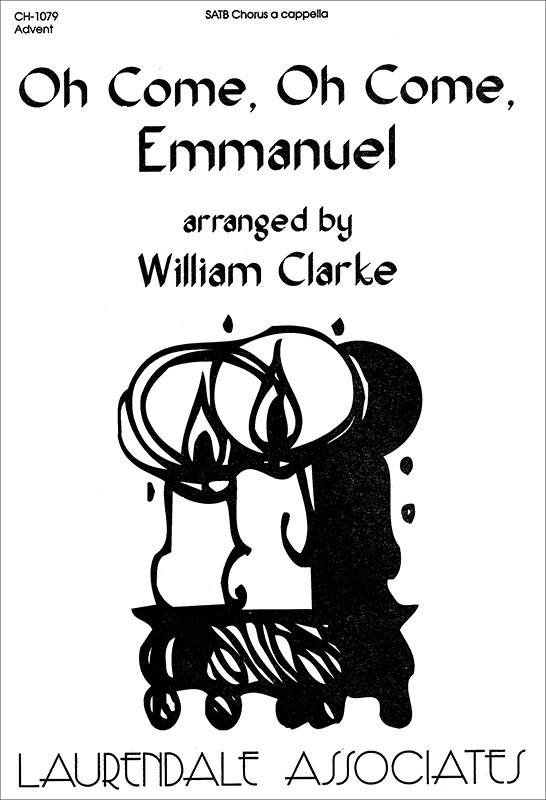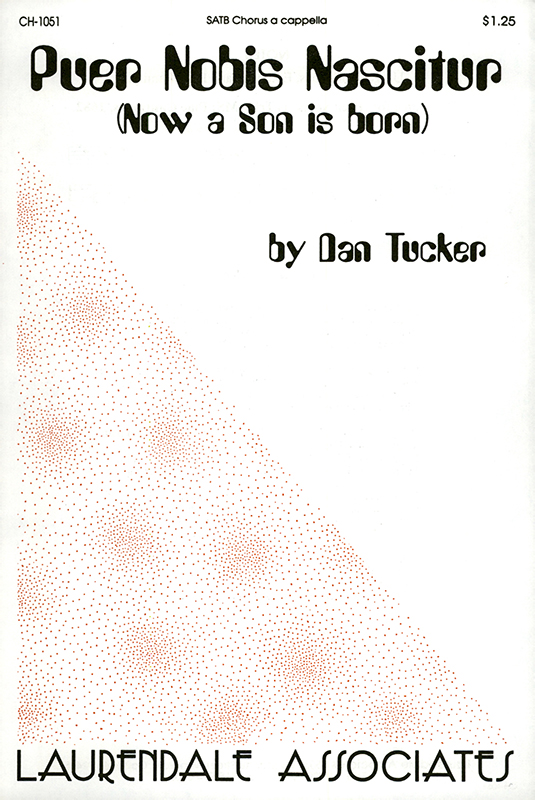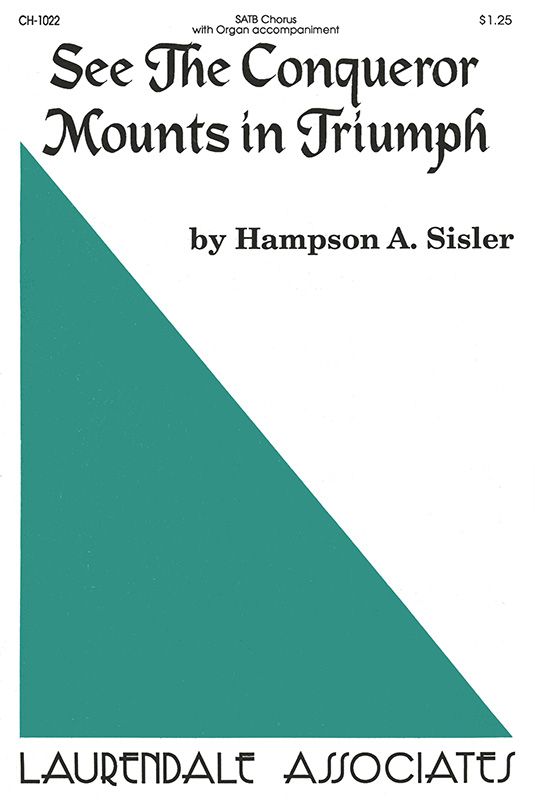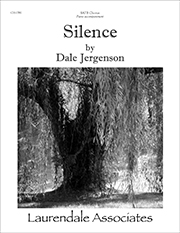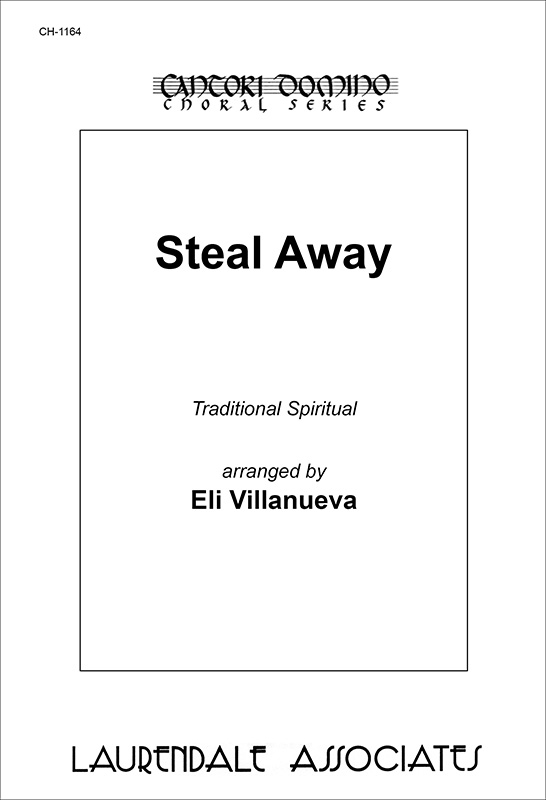In Celebration of the Human Voice - The Essential Musical Instrument
Home | Doo Wop | Barbershop | World | Contemporary | Christian | Vocal Jazz | Choral | Christmas | Instructional | Arrangements
Classical | Opera | Musicals | Personality | Young Singers | Disney | Videos | Songs | The Artists

Sheet Music Series
Laurendale Associates
All | 2-Part | SA | SAB | SATB | SATB divisi | SSA | SSAA | TB | Unison
Individual Folios
SATB
Displaying 1-50 of 61 items.
Subtitled Wisdom, from Songs of the Sages. Designed for maximal applicability and adaptability, as few as 2 solo voices of any vocal range are sufficient, in long or short form. This same 2-part version may also be sung by small choruses, hard-put to cover four vocal parts. The piece has an optional cut for either long or short versions, and written out 2-part or 4-part voicing. The Narrator part never coincides with the singing parts. The Suite (all three pieces) has recently been orchestrated for full orchestra by Arkady Letush.
Duration 5:30 or 3:00
Composer: Hampson A. Sisler
Subtitled Knowledge, from Songs of the Sages. Designed for maximal applicability and adaptability, as few as 2 solo voices of any vocal range are sufficient, in long or short form. This same 2-part version may also be sung by small choruses, hard-put to cover four vocal parts. The piece has an optional cut for either long or short versions, and written out 2-part or 4-part voicing. The Narrator part never coincides with the singing parts. The Suite (all three pieces) has recently been orchestrated for full orchestra by Arkady Letush.
Duration 5:30 or 3:00
Composer: Hampson A. Sisler
Subtitled Virtue, from Songs of the Sages. Designed for maximal applicability and adaptability, as few as 2 solo voices of any vocal range are sufficient, in long or short form. This same 2-part version may also be sung by small choruses, hard-put to cover four vocal parts. The piece has an optional cut for either long or short versions, and written out 2-part or 4-part voicing. The Narrator part never coincides with the singing parts. The Epilogue is only to be used when performing all three pieces in the series. The Suite (all three pieces) has recently been orchestrated for full orchestra by Arkady Letush.
Duration 3:10 or 2:10 + 1:40
Composer: Hampson A. Sisler
The Asperges me is sung in the modern Roman liturgy as part of the rite of blessing and sprinkling of holy water on Sunday outside of the Easter season (Easter through Pentecost). The text would be suitable as an anthem for Lent (particularly Laetare or Refreshment Sunday) or for other times when the Scriputral readings mention water. Duration c.1:30
Composer: Dale Jergenson
(choral score has keyboard reduction - piano 4-hands) No. 1 from A Mary Trilogy. Quietly, reverently, this setting of the classic Ave Maria text is inspired in its gentle vocal writing combined with a beautiful flugelhorn solo. No full score is available.
Duration 4:30
Composer: Gregg Smith
Utilizing a poem by Lawrence Ferlinghetti, this piece is completely improvised with detailed performance directions included. The chorus members evenly space themselves around the perimeter of the auditorium with the seven soloists on the stage. The singers pass sounds around the hall, from one to the other, as well as perform many sections tutti. The final performance effect is to be a musical/dramatic reading.
Composer: Dale Jergenson
A song to Spring with the opening words Spring has now unwrapped the flowers... With the innocence of the children's voices against the full SATB choral sould and the sonorous brass, the lushness of spring is spread throughout the piece.
Duration 6:00
Composer: Dale Jergenson
The Children's Choir of St. Cyril's, directed by Ms Susan Mills, offered a unique opportnity for the writing of a Mass for Full Choir, Children's Choir and instuments. The Irish Harp (also known as the Celtic Harp) was chosen as the sole accompaniment because of the lovely, soft sound of the strings, as opposed to the more bright sound of a standard harp. Two instruments are used because of the lack of tuning pedals on the Irish Harp and the need for an enlarged tonal pallet from that of a single Harp. It was also an opportunity to write a part for Boy Soprano - such a lovely sound when combined with the Celtic Harp.
Composer: Dale Jergenson
Text is in Russian (phonetic) with a translation and pronunciation guide. The story is about a soldier dying on the battle field and telling the Black Raven to fly home to his mother and sweetheart to tell of his love for them. Russian Folksong.
Duration 4:30
Composer: Dale Jergenson
The text for Christ Has No Body was suggested to me by Father Eben MacDonald. During a recent hospitalization I was visited by Father Mac and at that time I asked if he had any favorite Liturgical Text that I could set to music for our choir to sing in our Parish. He introduced me to an extraordinary poem by Saint Teresa on which I eagerly started to work. The result is a lilting setting with smoothly interacting vocal lines challenging only insofar as very legato singing is required. As indicated in the score the accompaniment should be be smoothly flowing. -Dale Jergensen
Composer: Dale Jergenson
The 6th century text, translated by E. Doan, is suitable for wide use. Additional inclusive language by Sisler makes the piece suitable for any denomination. The 2X4 Choral Series designation allows for the piece to be performed in a variety of ways: 2-part a cappella, 4-part a cappella, or either 2-part or 4-part accompanied by keyboard (which uses the 4-part vocal version for the keyboard part).
Duration 1:45
Composer: Hampson A. Sisler
The mood of this piece ranges from subdued and reflective to one of joy and celebration as the ringing of the bells on Christmas day signals the hope for peace and goodwill to all men.
Composer: Dale Jergenson
From the Continental Harmony of 1794. Anonymous text: Arise and hail the sacred day, Cast all low cares of life away... Music is as originally printed by Billings except for the use of modern notation and a line of text for each voice; however, the piano reduction reverses the positions of the tenor and soprano parts, and should the conductor elect, this piece may be performed in this manner. Contains editors performance suggestions.
Composer: Dale Jergenson
A fresh and original setting of Charles Wesley's familiar text, it is an apt celebratory piece for the Advent Season. Each verse has a different musical treatment. Flute part included in the publication. Hyfrydol - Rowland Prichard (18111887)
Duration 4:00
Composer: Christopher Hathaway
Raised in a quintessential Protestant tradition, Eugene's encounter with liturgical worship, and especially the Mass, was breath-taking. His imagination was first set in motion for this piece when he heard the Credo intoned at Grace Cathedral in San Francisco. The drama of this particular piece clearly occurs in the organ accompaniment as the choir and congregation recited the entire credo on a single pitch. Credo received this response on tour in the Czech Republic: ...deep artistic and human expression...the strongest probably provoked by Stravinsky's Symphony of Psalms...and the exciting Gerlitz' Credo (translated from Pojizerski Listy, 11 August 93, Vladmir Havrada, critic).
Composer: Eugene Gerlitz
About the Music: This spititual is in the"Call and Response" style. The soloist (leader) sings the Callpart, and the choir, group, or congregation replies singing the Response. This is a very popular celebration spiritual with many verses. The leader would make up the verses as he/she would go along."We took out the sword and shield and put in boxing gloves. This gave students something they could relate to at the Collegiate School in Manhattan". Traditional Spiritual
Composer: Roosevelt Credit
Suite contains: 1. The Dawn of Spring, 2. Summer Day in the Garden, 3. Autumn Night Song, 4. Snow on the River. The four pieces relate directly to the four seasons. All are build on Chinese music models with vocal sounds imitating Chinese instruments.
Composer: Francis Baxter
This rhythmically dynamic composition uses the complete Latin text, but has been conceived as a concert piece for good choral ensembles. It received its first performance by the Los Angeles Master Chorale and was subsequently used on tour by the Roger Wagner Chorale. Note: A full orchestra score exists, but is not available at this time.
Duration 4:37
Composer: Dale Jergenson
Care should be taken to sing phrases in a legato manner, with special attention given to maintaining support of the tone when singing longer notes that occur in the middle of a phrase such as in m. 8. Strict adherence should be taken to the dynamic markings for maximum interpretation of the text. A spirit of reverence should be maintained throughout the piece.
Composer: Doug Andrews
Commissioned by Cantori Domino, this setting of the anonymous text has a Tudor or English feel throughout the whole piece. Piano or Chamber Orchestra: Flute 1 & 2, 2-3 oct. Hanbells, Harp, Percussion and optional Bass.
Duration 3:00
Composer: Dale Jergenson
Winner of the 2005 California ACDA Composition Competition. Commissioned by Richard Basal for his friend and accompanist, Louise Basal. The energetic and demanding piano part gives this Hodie a special vitality for this splendid and time-honored text. The contrasting middle section with its chant-like movement sets up the big ending.
Duration 4:40
Composer: Dale Jergenson
This Traditional American melody is arranged in unison, homophony and canonic sections to bring the text to life: Come ye sinners, poor and needy, weak and wounded, sick and sore; Jesus ready stands to save you, full of pity, love and power. American Folk Hymntune. Duration 1:35
Composer: Nick Strimple
The Te Deum is the opening and most extensive movement of the Service in A Major, Opus 63, and contains the only solo work for alto and tenor. The opening choral unison , preceded by an exuberant imitation of bell-ringing in the organ, sets the stage for a very festive work. The entire Service in A Major forms a very effective 37 minute concert piece. In keeping with its primary function as a work for the Episcopal liturgy, each movement stands alone quite well as an attractive, independent composition in the late Romantic style. English text.
Duration 9:00
Composer: Nick Strimple
Newly composed without the use of preexisting material, as in Te Deum, the composer maintained a visual connection with the English Cathedral tradition through the use of half-note beats. This device, which lends the music an archaic look, is never-the-less a great nuisance to early 21st century performers who are accustomed to reading quarter notes. We have therefore halved the note values for easier reading, so that the music now moves in quarter note pulses. This edition is based on the good manuscript copy which Mrs. Beach provided the A.P. Schmidt company. The organ part has been placed on three staves. All editorial marks are placed in brackets and consist of dynamic indications and accidentals which the composer obviously omitted by accident.
Duration 8:20
Composer: Nick Strimple
Kol Dodi is one of Nowakowsky's few secular pieces. The text, from the Shir HaShirim (The Song of Songs book of love poetry), is musically set in two parts. The piece repeats the AB form and accelerates to a frenzied ending. There is a classic recording sung by the great cantor Moshe Koussevitsky, who performed this piece as part of his concert repertoire.
Duration 4:30
Composer: David Nowakowsky
The opening figure in the piano is a sort-of whoo-whoo of a train whistle and the rhythmic figure starting in m. 6 is supposed to be descriptive of a steam engine chugging along the track. Thomas H. Johnson, in his Introduction to Final Harvest, a collection of Dickinson poems, posits that Emily used dashes as a musical device and capital letters as a means of emphasis. He further writes that she deliberately fractured grammar to achieve special effects. I like to see it lap the Miles is testimony to Johnson's analysis and apparently celebrates that exciting form of transportation in the 19th Century, the railroad.
Composer: Dale Jergenson
Using the poem"A Hymn for Lazarus" by Kim Norton Rich,"Lazarus, Come Out!" is cast in a Gospel type setting with rhythms typical of this genre of choral music. c. 4:30
Composer: Dale Jergenson
This Christmas Carol combines text from B.M.G. and the composer (D.R.J.) and is cast in a verse/chorus form. The piece can be either accompanied or sung a cappella. Duration c. 6:00
Composer: Dale Jergenson
Missa Populi (Mass or Music of the People) came about as a result of a desire to combine the elements of contemporary musical expression with that of the current Catholic Liturgy. The only deviation from current practice is the setting for the Credo which is not usually set to music in the Masses of today. It uses the concept of the old beatnik coffe house poets reading their poetry to a background of some sort of music, mostly jazz. It is noteworthy that the Credo was composed in the Bartok Cottage in Saranac Lake, New York on July 21st, 2005.
Composer: Dale Jergenson
Nunc Dimittis was written for the Fall, 2004 tour of Cantori Domino to York, England and performance during Evensong at York Minster. The accompanying Magnificat was written shortly before the completion of the Nunc Dimittis. Whereas the Magnificat was written to be boisterous and celebratory in its rendition, the Nunc Dimittis, utilizing the Gregorian chant as the main theme, evokes a more prayerful attitude with its softer tonalities and rhythms, then ending with a Gloria Patri, similar to the one contained in the Magnificat.
Composer: Dale Jergenson
O Magnum Mysterium is one of the greatest texts for choral music from the Renais-sance to the present day but has some variations used by composers from Victoria to Poulenc. Gregg has chosen the version of the text that includes Dominum Jesum Christum and includes a final Alleluia instead of Amen. The image of the oxen and donkey next to the crib is found in Isaiah and is traditionally related to the nativity scene at the birth of Jesus in Luke 2. The image continued to spread from the 13th century onwards becoming the most popular symbol for the mystery. The second part of the responsory relates to the words with which Elizabeth welcomes Mary, mother of Jesus on her visitation. Gregg uses a mixture of notation styles in this piece with dissonant harmonies and instances of polytonal chords with a challenging piano part. The entire piece is based on the O Magnum Mysterium of Tomas Luis de Victoria. There is a wonderful "insider joke" on page 16 in the piano part at the beginnin
Composer: Gregg Smith
Text is in Italian with translation and pronunciation guide contained in the notes. This famous art song is treated in a traditional style with suggestions for synthesizer (keyboard) sounds.
Duration 2:45
Composer: Dale Jergenson
This "O, What a Beautiful City" arrangement was originally written when the Gregg Smith Singers was doing a lot of work in the NYC schools for Arts Connection. In the beginning performances the school children sang the melody while GSS sang the harmonic parts. Flexibility is encouraged, especially when working with diverse forces. Featuring the children's voices and the soprano solo is paramount; however, if no children's chorus is available, it is perfectly acceptable to use all SATB voicing. Part of the Gregg Smith Folksong Series.
Composer: Gregg Smith
This compelling Christmas anthem begins with alternating solos in the basses and then sopranos. It builds throughout the setting with choral color first in the men's section and then the women's section, and finally full SATB with some divisi and double forte for a very dramatic ending. Works well as a processional. 12th Century Advent Chant/Plainsong
Duration 2:36
Composer: William Clarke
Nowakowsky wrote prolifically for texts from Psalms. While many of these were composed for use in worship services, most were intended for the regular concerts which he presented at the Brody Synagogue. These concerts attracted all segments of the community including Russian royalty. In addition to Psalms in Hebrew, Nowakowsky created many in Russian and several in German. This setting for Psalm 115 is of cantata length and style, modulates adventurously into numerous keys, contains sections for eight-part double chorus, and utilizes marvelous musical descriptions of the biblical metaphors.
Duration 20:00
Composer: David Nowakowsky
"The recent passing of two of my dearest friends, Mary Garcia, Choir Mother for the St. Cyril's Parish Choir and Coleen Zeizer, long time friend and vocal associate in the Cantori Domino Choral organization are memorialized in this piece. Chief Dan George captures with great poignancy the tenderness and hope for strength in the sorrow we experience for our dear ones that have moved on. The images in my mind of the stars, flowers and tears all contributing to a great silence are strong indeed. There is no need for survivors guilt. We simply carry on, knowing in our hearts that we have tacit approval from our very special, compassionate friends." -Dale Jergenson. Performance time: c. 2:20
Composer: Dale Jergenson
A joyous Christmas original that will be a success for every choir! This piece has comfortably included four quodlibets together to make it sound much more difficult that it really is. This will be a wonderful rehearsal and effective performance piece. Perfect for any size choir, this gem could be adapted to SAB quite easily. It will also translate readily into MIDI sequencing for the accompaniment.
Duration 2:10
Composer: Barbara Klemp
The anonymous text: Spirit of mercy, truth and love, O shed thine influence from above. is suitable for wide use. The 2X4 Choral Series designation allows for the piece to be performed in a variety of ways: 2-part a cappella, 4-part a cappella, or either 2-part or 4-part accompanied by keyboard (which uses the 4-part vocal version for the keyboard part).
Duration 1:38
Composer: Hampson A. Sisler
Steal Away marries the text and melody of the original spiritual with more contemporary colors and harmonies using unaccompanied voices. The effect these tonal colors achieve suggests both a deep desire to leave their present condition and a strong hope of finding the home where they belong. Traditional Spititual.
Duration c. 3:00
Composer: Eli Villanueva
 |

|  | |
| Page: | 1 | 2 |
![]() Vocal Harmony Arrangements - Home
Vocal Harmony Arrangements - Home
Christian | Gospel | Standards | Musicals | Specialty | World | Barbershop | Contemporary | Vocal Jazz | Choral | Christmas
Mixed Voices | Female | Male | 8 Parts | 6 Parts | 5 Parts | 3 Parts | 2 Parts | Medleys | Solo | Folio Series | New Releases
Select a Category |
Want to Sing? - Find a Chorus Near You
List of Choruses by State | List of Choruses by City

